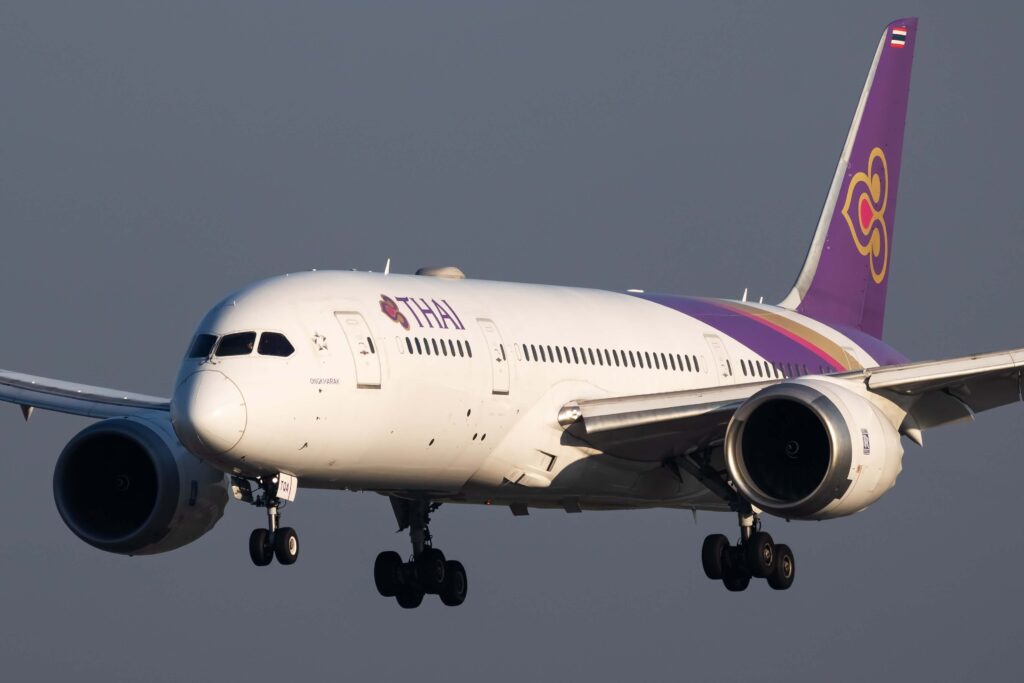The Central Bankruptcy Court of Thailand gave the final go-ahead for Thai Airways’ rehabilitation plan. The final nod means that the air carrier will be able to take a step further in an attempt to turn profitable, as the rehabilitation plan is seen as fundamental for the carrier that has been reporting losses since 2013.
“The Central Bankruptcy Court granted an order to approve THAI’s Business Rehabilitation Plan as well as the amended plan following the acceptance resolution of the creditors’ meeting on 19 May 2021,” read Thai Airways statement.
The decision to file for bankruptcy protection in order to rehabilitate the business helped the flag carrier avert bankruptcy and saved it from furloughing its entire workforce. Thai Airways has been reporting losses since 2013, which has resulted in capital deficiency and lack of financial liquidity.
According to the latest financial results, in 2020, the airline suffered a record loss of 141 billion baht ($4.6 billion) amid the ongoing pandemic. Previous losses ran up to 12 billion baht ($385 million) in 2019, 11.6 billion baht ($372 million) in 2018, and 2.1 billion baht ($68 million) in 2017.
The never-ending losses, which led the airline to file for bankruptcy protection, prompted speculation of alleged corruption at Thai Airways. Earlier in December 2020, the ongoing investigation of alleged corruption at Thai Airways flagged 20 people suspected to be involved in possible airline mismanagement that had led to losses.
Thailand’s Ministry of Finance to reduce its stake in the airline from 51% to below 50% in 2020. This decision transformed the airline into a private enterprise, which meant that the government no longer had a legal obligation to offer financial assistance for the struggling national carrier despite owning a large stake in it.
Rehabilitation plan: what’s next for Thai Airways?
Thai Airways’ rehabilitation plan consists of major business and financial reorganization. The business reorganization plan includes a revenue increase plan, expense reduction, work process adjustment, and organizational restructuring to sustainably increase efficiency. Financial reorganization, on the other hand, includes debt and capital restructuring.
As part of the plan to swing into profitability, Thai Airways has already implemented certain measures. The airline is planning to tackle its cost problem, which includes reducing the number of staff to approximately 14,000-15,000 employees by 2025. The airline has already cut its workforce from 29,000 employees to 21,000 in 2020 and is considering additional 6,000 staff leaves by the end of 2021.
In addition to the workforce reduction, Thai Airways plans to reduce its fleet size keeping only five aircraft types, down from the current 12. The airline has been trying to sell its 10 Boeing 747 passenger planes to mitigate the COVID-19 consequences. In February 2021, rumors spread that the aircraft sale was part of a plan to modernize the fleet and replace sold or decommissioned airplanes with new ones by the end of 2025. However, Thai Airways denied rumors regarding new aircraft purchases, saying that it would only sell its aircraft if the Central Bankruptcy Court approved its bankruptcy restructuring plan.
Search of more clarity prompted endless delays to rehabilitation
The final go-ahead for the airline’s rehabilitation plan from the Central Bankruptcy Court came not without difficulty, as Thai Airways creditors searched for more clarity on the airline’s ability to repay debts and implement the rehabilitation plan.
On September 14, 2020, the Central Bankruptcy Court approved the ailing airline’s request for bankruptcy protection and debt restructuring. The Court granted Thai Airways business reorganization petition and appointed planners who were expected to submit a plan to the Court within the fourth quarter of 2020. However, the submission was postponed several times.
After pushing back the deadline for filing its rehabilitation plan several times, the Bangkok-based airline finally submitted its plan to the Central Bankruptcy Court’s official receiver on March 2, 2021.
During the creditors’ meeting on the vote of submitted rehabilitation plan on May 12, 2021, Thai Airways creditors pushed the vote back, arguing that they needed more clarity about the airline’s rehabilitation plan.
“Since 20 creditors who hold the total debt amount have requested for the meeting postponement, the Official Receiver ordered the postponement of the creditors’ meeting, and has scheduled the new date for creditors’ meeting via electronic media,” read Thai Airways statement.
The final creditors’ vote on the plan was held on May 19, 2021, during which creditors gave their approval. However, while the plan was pending to be accepted by the court, creditors filed two complaints against the plan arguing there was a need to “clarify various issues”. Yet again, the move postponed the final court hearing from May 28, 2021, until June 15, 2021.
“Creditors filed two complaints against the restructuring plan, which the court accepted,” read Thai Airways’ statement on May 28, 2021.

